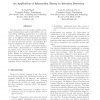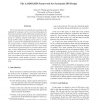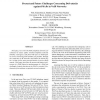IWIA
2006
IEEE
14 years 9 months ago
2006
IEEE
The development of a Common Criteria protection profile for high-robustness separation kernels requires explicit modifications of several Common Criteria requirements as well as e...
IWIA
2006
IEEE
14 years 9 months ago
2006
IEEE
Zero-day attacks, new (anomalous) attacks exploiting previously unknown system vulnerabilities, are a serious threat. Defending against them is no easy task, however. Having ident...
IWIA
2006
IEEE
14 years 9 months ago
2006
IEEE
The commonly used flaw hypothesis model (FHM) for performing penetration tests provides only limited, highlevel guidance for the derivation of actual penetration attempts. In thi...
IWIA
2006
IEEE
14 years 9 months ago
2006
IEEE
The recent outbreaks of extremely fast spreading worms highlight the inadequacy of the current patching approach. Intrusion prevention systems (IPSs) that automatically generate a...
IWIA
2006
IEEE
14 years 9 months ago
2006
IEEE
We present POSEIDON, a new anomaly-based network intrusion detection system. POSEIDON is payload-based, and has a two-tier architecture: the first stage consists of a Self-Organi...
IWIA
2006
IEEE
14 years 9 months ago
2006
IEEE
Nowadays, voice over IP (VoIP) telephony networks are connected to classic public switched telephony networks (PSTNs). Emergency calls from VoIP peers to PSTN public service answe...



